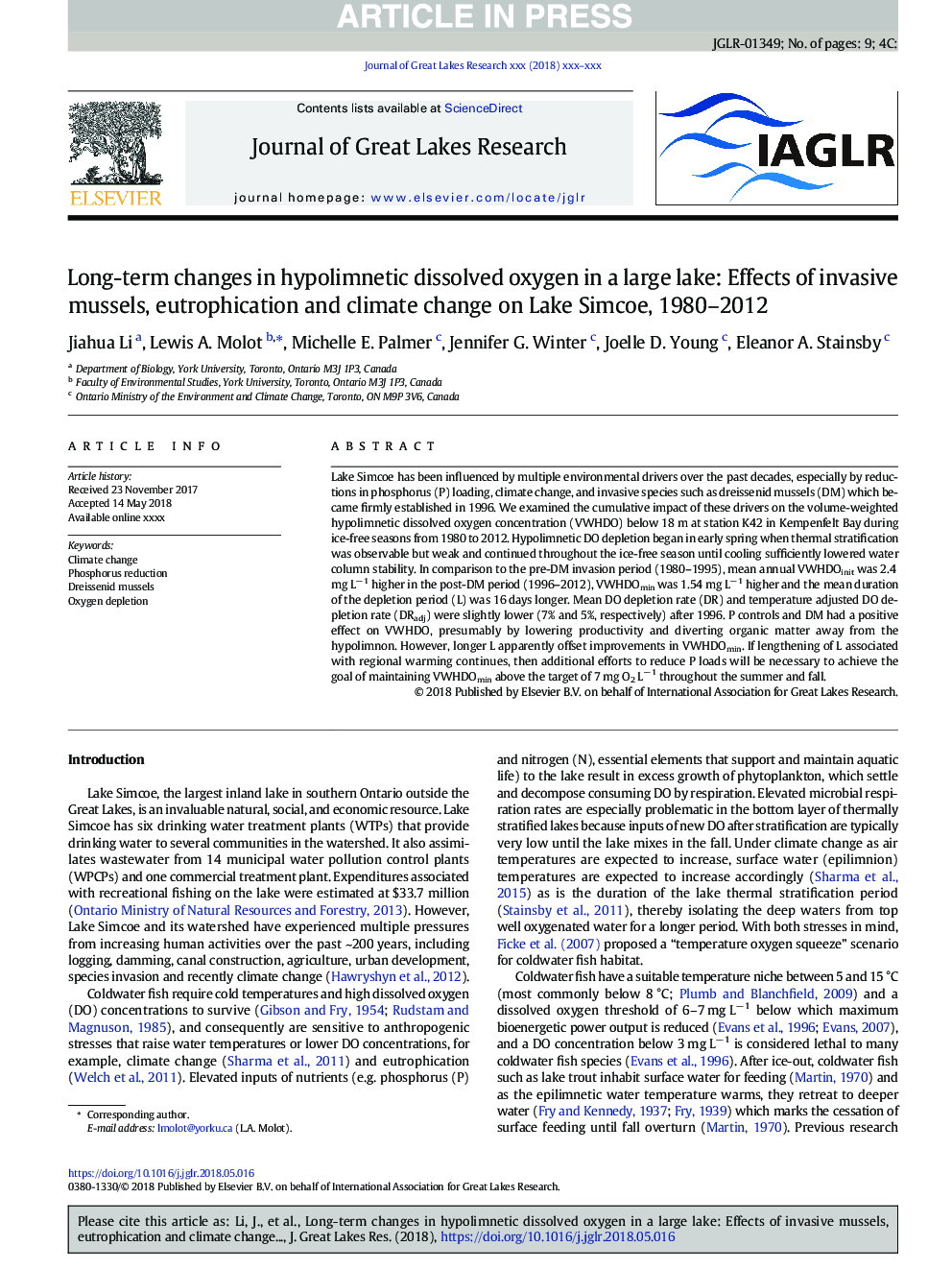| Article ID | Journal | Published Year | Pages | File Type |
|---|---|---|---|---|
| 8849089 | Journal of Great Lakes Research | 2018 | 9 Pages |
Abstract
Lake Simcoe has been influenced by multiple environmental drivers over the past decades, especially by reductions in phosphorus (P) loading, climate change, and invasive species such as dreissenid mussels (DM) which became firmly established in 1996. We examined the cumulative impact of these drivers on the volume-weighted hypolimnetic dissolved oxygen concentration (VWHDO) below 18â¯m at station K42 in Kempenfelt Bay during ice-free seasons from 1980 to 2012. Hypolimnetic DO depletion began in early spring when thermal stratification was observable but weak and continued throughout the ice-free season until cooling sufficiently lowered water column stability. In comparison to the pre-DM invasion period (1980-1995), mean annual VWHDOinit was 2.4â¯mgâ¯Lâ1 higher in the post-DM period (1996-2012), VWHDOmin was 1.54â¯mgâ¯Lâ1 higher and the mean duration of the depletion period (L) was 16â¯days longer. Mean DO depletion rate (DR) and temperature adjusted DO depletion rate (DRadj) were slightly lower (7% and 5%, respectively) after 1996. P controls and DM had a positive effect on VWHDO, presumably by lowering productivity and diverting organic matter away from the hypolimnon. However, longer L apparently offset improvements in VWHDOmin. If lengthening of L associated with regional warming continues, then additional efforts to reduce P loads will be necessary to achieve the goal of maintaining VWHDOmin above the target of 7â¯mgâ¯O2â¯Lâ1 throughout the summer and fall.
Related Topics
Physical Sciences and Engineering
Earth and Planetary Sciences
Earth and Planetary Sciences (General)
Authors
Jiahua Li, Lewis A. Molot, Michelle E. Palmer, Jennifer G. Winter, Joelle D. Young, Eleanor A. Stainsby,
